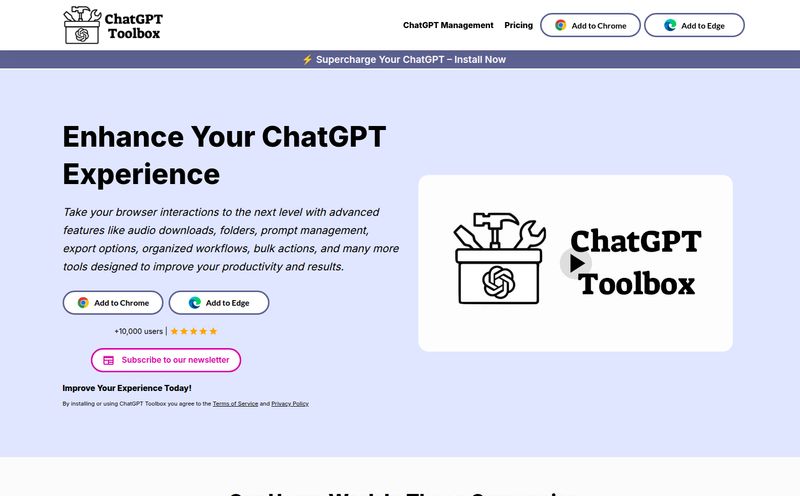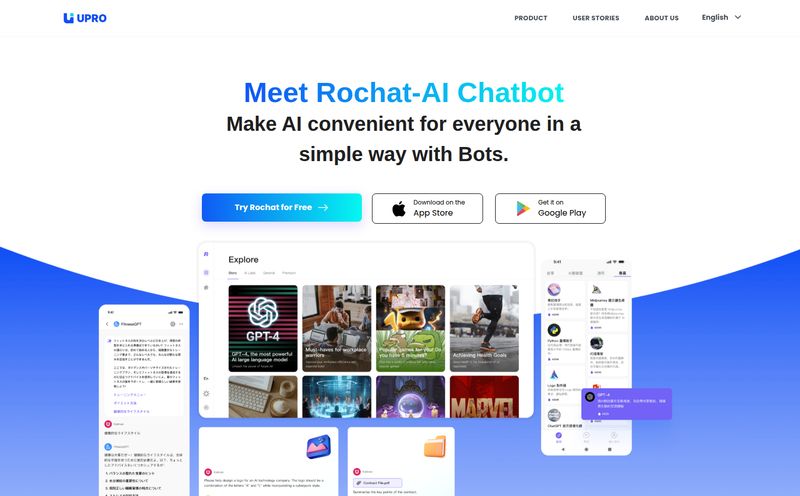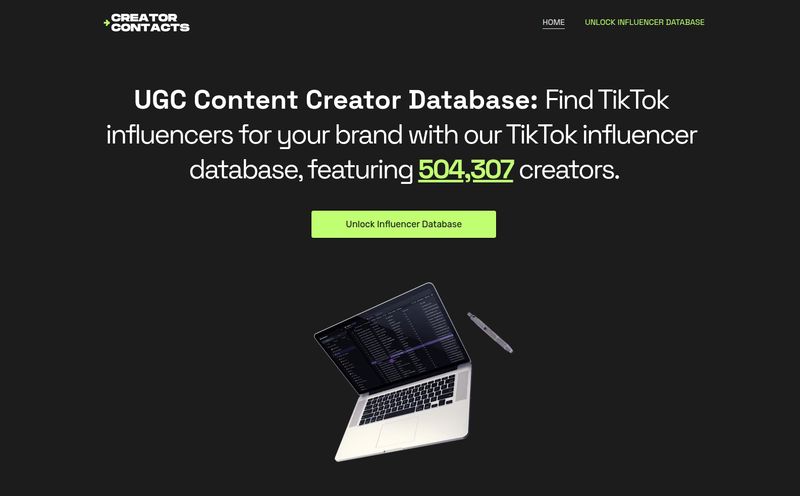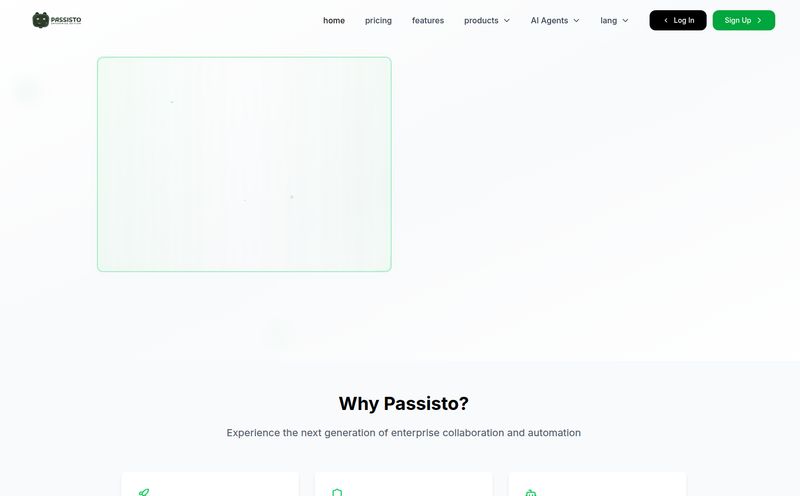How much of your workday is spent just… looking for stuff? You know the drill. You’re hunting for that Q3 performance deck. Was it in Google Drive? Or did Sarah Slack it to you? Maybe it was attached to an email from two months ago. Or wait, is it in that one Confluence page nobody's updated since 2022? The modern workplace has created a digital attic, a sprawling mess of valuable information scattered across dozens of apps. It’s a huge, frustrating time-suck.
For years, we’ve just accepted this as the cost of doing business. We try to enforce strict folder structures and naming conventions, but we’re only human. Things get messy. So when I heard about GoSearch, a tool that claims to be a unified search for your entire company, my inner SEO-nerd and frustrated-project-manager sides both perked up. Another promise to solve knowledge management? I’ve heard that one before. But this one’s from the folks behind GoLinks, a tool many of us already use and trust, so my curiosity was genuinely piqued.
So, is GoSearch the real deal, or just another shiny object? Let's get into it.
What Exactly is GoSearch Supposed to Do?
At its heart, GoSearch is an AI-powered enterprise search platform. Think of it less like a simple search bar and more like a super-smart librarian for your company's entire digital ecosystem. Instead of you having to remember where a piece of information lives, GoSearch connects to all your apps—your Google Workspace, your Slack, your Jira, your Figma, you name it—and lets you search across all of them from one single place.
This idea of a "single source of truth" has been a holy grail in business for ages. Most attempts fail because they require everyone to change their behavior and put everything in one new, unfamiliar system. The GoSearch approach is different. It doesn’t ask you to move your files; it just builds a bridge to wherever they already are. That, to me, is a much more realistic approach to solving the problem of information sprawl.

Visit GoSearch
The AI Magic: More Than Just Finding Files
Okay, so unified search is great. We've seen versions of it before. But where GoSearch really starts to show its muscle is in the 'AI' part of its name. This isn't just about finding a document that contains your keyword. It's about understanding context and delivering answers.
Getting Answers, Not Just Links
This is the part that feels like the future. You can ask GoSearch a question in plain English, like, "What is our company policy on parental leave?" Instead of just giving you a link to the 30-page HR handbook PDF (ugh), it can use its AI to read that document and spit out a direct, summarized answer. This is a massive leap from the traditional CTRL+F life we've been living. It's about getting knowledge, not just file locations.
They even let you build out custom enterprise GPTs. Imagine creating an internal AI expert trained exclusively on your company's sales data or your internal marketing wiki. A new sales hire could ask, "What are the top three talking points for pitching to a client in the finance industry?" and get an instant, expert-level answer. That's powerful stuff.
Multimodal Search is a Quiet Game Changer
Here’s something that might fly under the radar but is incredibly cool: multimodal search. It sounds technical, but it just means you can search for more than just text. You can search by images or even URLs. For creative teams, this is huge. You could theoretically search for an image of a "draft logo with a blue bird" and GoSearch could find it inside a Figma file or a slide deck, even if the file isn't named that way. It understands the content of the files, not just the titles.
Let's Talk Integrations: Connecting the Dots
A tool like this is only as good as the things it connects to. And this is where GoSearch seems to shine. They boast over 100 integrations with the apps most of us live in every day. We’re talking the big ones:
- Google Workspace (Drive, Gmail, Calendar)
- Microsoft 365 (OneDrive, Outlook, SharePoint)
- Slack
- Jira
- Confluence
- Figma
- Asana
- Zendesk
And the list goes on. This is the key to breaking down those dreaded data silos. That constant, nagging question of "Where did I see that?" starts to disappear when one search bar can check everywhere at once. It turns your sprawling, disconnected set of tools into a coherent knowledge base.
The Elephant in the Room: Security and Control
Whenever I talk to clients about a new cloud-based AI tool, the first question is always about security. And rightfully so. Handing over the keys to all your company's data is a big deal. It seems the GoSearch team understands this, because they've built in some serious security features that are often missing from newer platforms.
They offer BYOK (Bring Your Own Key) and BYOC (Bring Your Own Cloud). In simple terms, this means your organization can control its own encryption keys and choose to host the search index in your own cloud environment (like AWS or GCP). For companies in regulated industries like healthcare or finance, this isn't just a nice-to-have; it's a requirement. It shows a level of maturity and understanding of enterprise needs that gives me a lot of confidence in the platform.
A Reality Check: The Good, The Bad, and The Setup
No tool is perfect, and it’s important to go in with eyes wide open. Based on what I've seen and the specs they provide, here’s my honest take on the pros and cons.
What I Really Like About GoSearch
The speed and the unified experience are the obvious winners. The sheer relief of having one place to look for information cannot be overstated. The AI-generated summaries and answers are the real productivity booster, turning search from a chore into a conversation. And the security options are top-notch, addressing major enterprise concerns from the get-go.
Potential Hurdles to Consider
Now, let's be real. Plugging a tool into 100+ data sources isn't going to be a 5-minute job. There will be an initial setup and configuration process that will require some IT involvement. It's a one-time pain for a long-term gain, but it’s a hurdle you have to clear.
Then there's the price. You won't find a pricing page with neat little tiers. GoSearch has a "Contact Sales" button, which is enterprise-speak for "this is not a $10/month tool." And it shouldn’t be. The value proposition here isn't about being cheap; it's about the ROI you get from reclaiming hundreds of employee hours lost to inefficient searching. The question for your business isn't "Can we afford it?" but rather "How much is our current information chaos costing us?" I bet its more than you think.
Finally, while the AI is smart, it’s not infallible. You’ll still want human oversight, especially for critical decisions. Think of it as a brilliant but junior research assistant—it does the legwork incredibly fast, but you still need to give its findings a final review.
Who is This Actually For?
So, who should be booking a demo? In my opinion, GoSearch hits the sweet spot for a few types of organizations:
- Scaling Companies: Teams that are growing fast and feeling the pains of knowledge getting lost in the shuffle.
- Remote-First or Hybrid Workplaces: When you can't just turn around and ask a coworker, a powerful search tool becomes your best friend.
- Companies with Complex Workflows: If your teams are spread across engineering (Jira), design (Figma), and marketing (Google Drive), this bridges the gaps.
- Security-Conscious Organizations: Any business where data security and compliance are non-negotiable.
Look, the way we work has fundamentally changed. The volume of digital information we create is only going to grow. We can either keep drowning in it or find smarter ways to navigate it. While no tool is a magic wand, GoSearch feels like one of the most promising and well-thought-out solutions I've seen for the very real problem of corporate knowledge chaos. It's an investment, for sure, but the potential return in saved time, reduced frustration, and faster decision-making is pretty darn compelling.
Frequently Asked Questions about GoSearch
- What is GoSearch in simple terms?
- GoSearch is like a private Google for your company. It's a single search bar that connects to all your workplace apps (like Google Drive, Slack, Jira, etc.) and uses AI to help you find information and get direct answers to your questions.
- How is this different from the search bar on my Mac or PC?
- Your computer's search looks for files on your local hard drive. GoSearch looks across all your company's cloud applications. It also uses AI to understand the content and context of the information, providing summaries and answers, not just a list of files.
- Is GoSearch secure for our confidential company data?
- Yes, security is a core feature. It's designed for enterprises with features like "Bring Your Own Key" (BYOK) and "Bring Your Own Cloud" (BYOC), which give your company full control over your data's encryption and where it's stored.
- What kind of apps does GoSearch integrate with?
- It integrates with over 100 popular workplace apps, including the entire Google Workspace and Microsoft 365 suites, Slack, Confluence, Jira, Asana, Figma, Zendesk, and many more.
- Do I need to be a technical expert to use it?
- For the end-user, it's incredibly simple—it's just a search bar. The initial setup requires some technical configuration from an administrator to connect all the apps, but once that's done, it's easy for everyone to use.
- How much does GoSearch cost?
- GoSearch uses custom enterprise pricing. There isn't a public price list. You'll need to contact their sales team for a demo and a quote based on your company's size and needs. This is typical for powerful, security-focused enterprise software.



